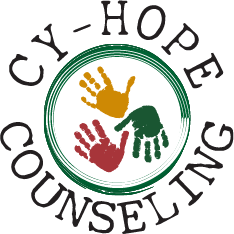How to Talk to Your Child During Times of Tragedy
Written by: Clinical Director Courtney Suddath, LSSP, LPC
Many of us have been faced with the difficult question of how to explain to the children in our lives, a tragedy that we don’t fully understand. Hard conversations have had to take place in the last 24 hours in response to the school shooting at Douglas High School in Florida. Many adults, while still reeling from the news and all of the questions that it brings up for each one personally, are faced with answering questions from school-aged children in our lives. There is no easy answer, but many professionals agree on several points that can guide these difficult conversations.
Reinforce Safety The question that many children are asking is, “Am I safe?” In situations like this, it is important to assure children that many people are making sure that they are safe. This is a good time to review family safety procedures as well as safety procedures in place in schools. If you don’t have a family safety plan, this is a great time to make one. In your safety plan, include a place to meet if family is separated, identifying another safe adult, memorization of your home address and important phone numbers, how to call 911. Most of all, let children know that if you are not together when something scary happens, you priority is to get to where they are as quickly as possible. If you are not aware of the safety plan at your child’s school, ask their school about the plan so that you can assure your child at home, and so that you are aware of what the safety procedures are.
Communication As we process tragedy, it is important to keep conversation open. Provide children with a safe place to process their thoughts and feelings freely. As adults, in order to be open to these conversations, it is important to process our thoughts and feelings with other adults in a private setting. Our goal when children are sharing their feelings and questions, is to show our concern and sadness, but to be clear and present to help them find peace. Pay close attention to your child’s age and tailor communication, and what facts are shared, to their developmental level. Talk care to limit information to our younger children, while remaining honest in our responses. For younger children, try to only answer what they ask, without adding many details that they haven’t asked about. Older children may be ready to hear more details and they may also be ready to be a part of conversations about possible solutions and how they can help in their schools and community.
Keep Exposure to a Minimum Limiting a child’s exposure to news shows is always a good idea, and is even more of a priority when a tragedy occurs. Each time a child is sees a visual image of a tragedy, or sees the event covered on the news, it is as though the event is happening again in real time. It is hard for children to understand that the images are being shown from a past event, and therefore continued exposure to these images makes this kind of tragedy seem much more common than it is. Additionally, seeing these images in the safe place of their home can associate unsafe feelings to a place where we want children to feel the most safe. No matter how hard we try to protect them, children may be exposed to conversations that take place at school. If this happens, this is when we can use safe and open communication.
Frequent Check-Ins After an tragic event, it is important for us to check in with our children to asses their emotional state. In most cases, our community will not be directly affected, but because of the easy access to social media and television, our children may feel that events like this are closer to us than they really are. It is important to check in with our children each day for a while to ask how they are feeling. Red flags to note will be changes in behavior, either becoming more withdrawn or presenting more risk-taking behaviors, as well as increased school and/or peer difficulties.
Keep a Normal Routine Keeping things as normal as possible will also help your child feel safe. As simple as maintaining normal meal times, bed times and even keeping expectations the same, will go a long way to providing the safe framework that children are used to. Children look to adults in their life to determine how safe they feel and will often model their behavior. Children will find comfort in knowing that although something unexpected has happened, their daily life has remained basically the same. While keeping routines the same, encouraging family time filled with laughs and fun, is a good distraction from the seriousness that can overcome us in a time like this.
It is difficult to explain to children that sometimes bad things happen. While this is not a conversation we necessarily want to have, it is an important one. In the wake of a tragedy like a school shooting, we are in the position to encourage our children to be aware, share important information with safe adults, and to understand that some people struggle with things that affect their choices. This is the time to have conversations about the importance of mental health awareness. If we see children, teens or adults who are hurting and need help, let’s help them find help. Let’s teach our children to be aware of their surroundings for their own safety, and also the safety of others. Let’s teach them to talk to a safe adult when we see a peer struggling. Let’s empower our community to join hands to care of our community and EVERY person who lives, works and goes to school among us.
